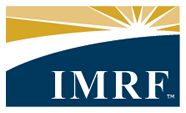Impact of 2014 Investment Return on Employer Funding Status, Employer Reserves, and Future Employer Contribution Rates
January 29, 2015
We encourage each Authorized Agent to
share this memorandum with their unit of government’s chief financial officer, business managers, other officials, and governing body members.
Executive Summary
This preliminary information is based on unaudited investment return data and projected actuarial information. Finalized information will be available in May 2015.
The estimated 2014 investment return for IMRF is 5.57%. This return translates into investment income of approximately $2.3 billion after investment and administrative expenses. Member and annuitant reserves will be credited approximately $1.58 billion as required by the Illinois Pension Code. Employer reserve balances will be credited with the balance, approximately $0.72 billion. On average, employer accounts will be credited approximately 5.12% of interest and residual investment income on their beginning of the year employer reserve balance. These credits reflect the fact that, as a sponsor of a defined benefit plan, IMRF employers share all the risks and rewards of investment returns.
Beginning on April 20, 2015, IMRF will present a series of local rate meetings throughout the state. At these meetings we will discuss the impact of year-end financial and actuarial data on IMRF as a whole and its estimated impact on individual employers. We will also discuss other current topics impacting IMRF and pension plans in general. IMRF will also present the same information at a webinar in May.
Investment Returns
IMRF investment returns reflect financial markets over a calendar year. IMRF reports both a market basis return and an actuarial return. IMRF’s estimated 2014 investment return on a market basis is 5.57%. IMRF’s actuarial return is 9.9%. The actuarial return is used to determine employer contribution rates and actuarial funding status. This technique moderates fluctuation in employer contribution rates, and to delay the recognition of market returns that either exceed or fall short of the assumed actuarial return of 7.5% subject to a 20% corridor (the actuarial value of plan assets has to be within plus or minus 20% of the market value of assets).
Employer Funding Status
IMRF’s 2014 aggregate funding status on a market value basis (which does not reflect the five-year averaging technique or the 20% corridor), is projected to increase from 96.7% to 96.9%.
However, on an actuarial basis, IMRF's aggregate funding status is expected to increase from 87.6% as of year-end 2013 to 90.5% at year-end 2014.
Absent any significant changes in actuarial experience, most individual employers can expect the funding status of their plan to slightly increase on both an actuarial and market value basis.
In April and/or May, we will furnish each employer its annual GASB 50 footnote information as well as GASB 68 information for 2014. This information will disclose both the actuarial and market based funding status for all plans for their active and inactive members.
Impact on Employer Reserves
By statute, IMRF must credit member and retiree reserves with 7.5% interest (approximately $1.58 billion for 2014) and pay approximately $133 million in administrative and direct investment expenses. That leaves $0.72 billion to be credited to employer reserve balances.
On average, employers will be credited approximately 5.12% based on their beginning of the year employer reserve balance. This credit reflects the fact that, as a sponsor of a defined benefit plan, IMRF employers share all the risks and rewards of investment returns. The actual amount credited to individual employers will vary from the average due to differences in annuitant reserve amounts.
Over the last ten years, IMRF employers have been credited or (charged) the following amounts: $1.592 billion in 2014, $3.973 billion in 2013, $1.927 billion in 2012, ($1.436) billion in 2011, $1.713 billion in 2010, $3.461 billion in 2009, ($7.100) billion in 2008, $871 million in 2007, $1.879 billion in 2006, and $753 million in 2005.
Employer Contribution Rates
Employer contribution rates consist of as many as six parts:
- Normal retirement costs
- Death in service benefits
- Temporary disability benefits
- Supplemental retirement benefits (13th payment)
- Amortization of over or under funding
- Early Retirement Incentives (employer option)
The ongoing cost of the IMRF benefit package for the regular plan covering normal retirement costs, death in service benefits, temporary disability benefits and supplemental retirement benefits, was 8.41% of payroll in 2014. Put another way, for each dollar of service an employee renders, the employer also incurs a pension cost of 8.41 cents. If an employer is overfunded, the 8.41 cents is reduced and IMRF draws from surplus. If an employer is underfunded, the 8.41 cents is increased to collect the shortfall.
The average employer rate for the regular plan was 11.65% in 2014 and 12.58% in 2013, a decrease in the rate of 0.93%. The 11.65% rate reflects the fact that the regular plan was less than 100% funding in the aggregate on an actuarial basis as of December 31, 2014.
The impact of 2014 investment returns on individual employer 2015 contribution rates is difficult to forecast, since each employer has a unique rate affected by its own demographics and funding status as well as its mix of Tier 1 and Tier 2 members.
IMRF Meetings
To discuss the potential impact on individual employers in 2016 and beyond, IMRF will conduct a series of Employer Rate Meetings throughout the state beginning in April 2015. We will also discuss other current topics impacting IMRF and pension plans in general.
In May, IMRF will present a webinar in which this information will also be discussed. Details concerning these meetings and the webinar will be provided on the IMRF website and the Employer Digest e-newsletter.
Questions
If you have any questions regarding the information presented in this memorandum, please call or e-mail Chief Financial Officer Mark Nannini at (630) 368-5345 or mnannini@imrf.org.

